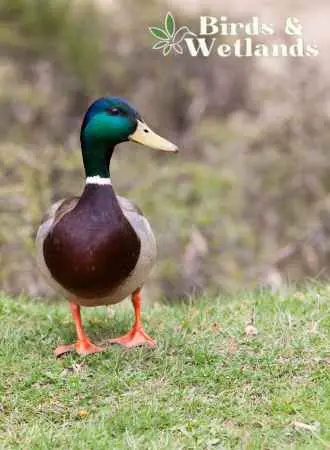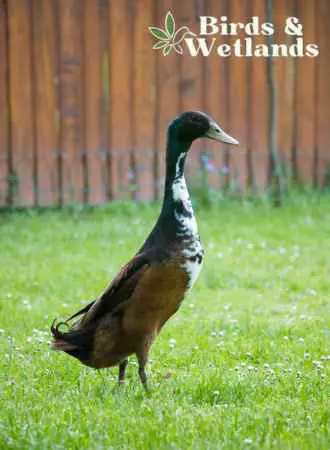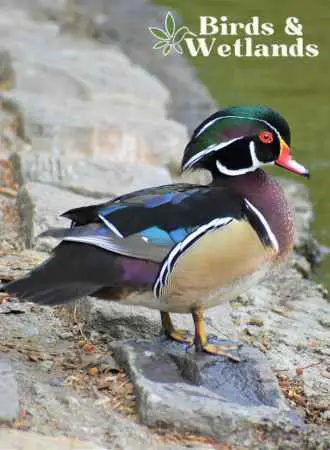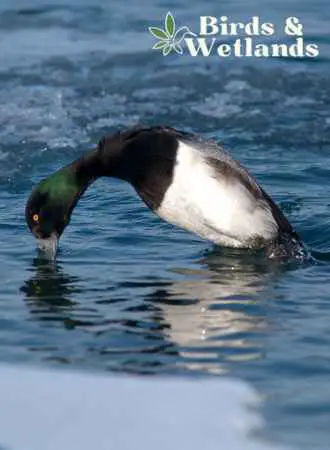Welcome to our comprehensive guide on duck identification and characteristics! This resource aims to help you recognise and appreciate the diverse physical features and unique traits of ducks.
Throughout this guide, we will explore various aspects of duck identification and link to our in-depth articles for a more detailed understanding of each topic.
Why is Duck Identification Important?
As an avid bird watcher and conservationist, I believe that duck identification is an essential skill for anyone interested in waterfowl. Accurately identifying ducks is not only important for personal enjoyment but also for conservation efforts and hunting regulations.
Conservation Efforts
Knowing how to identify different species of ducks is crucial for conservation efforts. By accurately identifying ducks, conservationists can monitor populations and track changes in their distribution and abundance. This information is essential for developing effective conservation strategies and protecting endangered species.
For example, the North American Waterfowl Management Plan (NAWMP) is a collaborative effort between the United States, Canada, and Mexico to conserve waterfowl populations and their habitats. Accurate duck identification is essential for monitoring the success of this plan and ensuring that waterfowl populations remain healthy and sustainable.

Duck Identification Basics
Identifying ducks can be an enjoyable and educational pastime. To get started, it’s essential to familiarise yourself with the unique features that define different duck species. These can include head colouration, bill and beak features, feet, neck length, and other distinctive traits.
Understanding these characteristics will enable you to differentiate between various duck species and appreciate their incredible diversity.
Physical Characteristics of Ducks
As a bird enthusiast, I find ducks to be fascinating creatures. They have several physical characteristics that make them unique and easy to identify. In this section, I will discuss the size, coloration, and behavior of ducks.
Size
Ducks vary in size depending on the species. The smallest duck is the Bufflehead, which is only 13-16 inches in length and weighs less than a pound. The largest duck is the Muscovy Duck, which can weigh up to 15 pounds and be up to 33 inches in length. Most ducks fall somewhere in between these two extremes, with an average length of around 20-30 inches.
Coloration

Ducks have a wide range of coloration, with males often being more brightly colored than females. Some ducks, like the Wood Duck, have intricate patterns and colors on their feathers. Other ducks, like the Mallard, have more muted colors. Some ducks, like the Ruddy Duck, have distinctive features like bright blue bills and chestnut-colored bodies.
Behavior
Ducks are known for their love of water and are often found swimming in ponds, lakes, and rivers. They have webbed feet that help them swim and dive for food. Some ducks, like the Ring-necked Duck, are known for their diving ability and can stay underwater for up to 30 seconds. Other ducks, like the Mallard, are dabbling ducks and feed on the surface of the water or on land.
Head Colouration in Ducks

Ducks exhibit an array of head colours that can help you identify the species. The following articles explore the different head colours found in ducks:
Bill and Beak Features
Duck bills and beaks come in various colours and shapes, which can be helpful in identification. Check out our articles on these unique features:
Feet, Legs, and Knees of Ducks

Ducks possess unique feet and leg features that enable them to thrive in aquatic environments. In this section, we will discuss these features and address the question: Do ducks have knees?
Duck Neck Length and Body Patterns
Neck length and body patterns are other important aspects to consider when identifying ducks. Our articles below delve into these topics:
Unique Duck Features and Traits
Some ducks have distinctive features that set them apart from others. Our articles below explore a few of these unique traits:
Physical Characteristics of Ducks
As a bird enthusiast, I find ducks to be fascinating creatures. They have several physical characteristics that make them unique and easy to identify. In this section, I will discuss the size, coloration, and behavior of ducks.
Size
Ducks vary in size depending on the species. The smallest duck is the Bufflehead, which is only 13-16 inches in length and weighs less than a pound. The largest duck is the Muscovy Duck, which can weigh up to 15 pounds and be up to 33 inches in length. Most ducks fall somewhere in between these two extremes, with an average length of around 20-30 inches.
Coloration
Ducks have a wide range of coloration, with males often being more brightly colored than females. Some ducks, like the Wood Duck, have intricate patterns and colors on their feathers. Other ducks, like the Mallard, have more muted colors. Some ducks, like the Ruddy Duck, have distinctive features like bright blue bills and chestnut-colored bodies.
Behavior
Ducks are known for their love of water and are often found swimming in ponds, lakes, and rivers. They have webbed feet that help them swim and dive for food. Some ducks, like the Ring-necked Duck, are known for their diving ability and can stay underwater for up to 30 seconds. Other ducks, like the Mallard, are dabbling ducks and feed on the surface of the water or on land.
Common Duck Species
As a bird enthusiast, I find ducks to be one of the most fascinating birds to observe. They are found in almost every wetland habitat and come in a variety of species. In this section, I will highlight some of the most common duck species that you might come across while bird watching.
Mallard
The Mallard is probably one of the most recognizable duck species. These ducks are found in almost every wetland habitat and are known for their striking green head and yellow bill. The male Mallard is more colorful than the female, with a bright green head and a chestnut-brown chest. The female, on the other hand, has a mottled brown plumage that serves as camouflage. Mallards are dabbling ducks, which means they feed by tipping their head underwater to reach vegetation.
Wood Duck

The Wood Duck is a beautiful and unique duck species. The male has a striking plumage, with a metallic green head, red eyes, and a white stripe around its neck. The female is less colorful, with a gray-brown head and a white patch around its eye. Wood Ducks are perching ducks, which means they have strong claws that allow them to grip onto branches and tree trunks. They feed on acorns, insects, and other small invertebrates.
Pintail
The Pintail is a long and slender duck species. The male has a distinct chocolate-brown head and neck, with a white stripe that runs from the neck to the breast. The female is less colorful, with a mottled brown plumage. Pintails are dabbling ducks, which means they feed on aquatic plants and invertebrates by tipping their head underwater. They are known for their long and pointed tail feathers, which give them a distinctive appearance.
These are just a few of the many duck species that you might come across while bird watching. Each species has its unique characteristics and behaviors, making them fascinating to observe. Whether you are a seasoned bird watcher or just starting, ducks are a great bird species to observe and learn about.
Diving Ducks in the US

The United States is home to a diverse array of diving ducks, attracting birdwatchers and nature enthusiasts from all over the world. Here, we will introduce some of the most common and notable diving duck species found across the US to help with waterfowl identification.
Canvasback (Aythya valisineria) Canvasbacks are large diving ducks with a distinctive sloping forehead and a chestnut-coloured head in males. They inhabit large lakes, rivers, and coastal areas, feeding primarily on aquatic plants and invertebrates.
Redhead (Aythya americana) Redheads are medium-sized ducks with a bright chestnut head and a blue-grey bill in males. They can be found in a variety of wetland habitats, including marshes, lakes, and estuaries, where they feed on aquatic plants, seeds, and invertebrates.
Greater Scaup (Aythya marila) Greater Scaups are medium-sized diving ducks with a rounded head and a blue-grey bill. Males have a glossy black head, neck, and breast, with white flanks. They inhabit large bodies of water, such as lakes, bays, and coastal areas, feeding on molluscs, crustaceans, and aquatic plants.
Lesser Scaup (Aythya affinis) Lesser Scaups are similar in appearance to Greater Scaups but slightly smaller and with a more peaked head shape. They can be found in a wide range of aquatic habitats, including lakes, ponds, and marshes, where they feed on aquatic invertebrates and plants.
Common Goldeneye (Bucephala clangula) Common Goldeneyes are medium-sized ducks with a distinctive round white cheek patch and bright yellow eyes. Males have a greenish-black head and a white body, while females have a brown head and a grey body. They inhabit freshwater lakes, rivers, and coastal areas, feeding on fish, insects, and aquatic plants.
Bufflehead (Bucephala albeola) Buffleheads are small diving ducks with a striking white patch on the back of the head in males. They prefer to nest in tree cavities and can be found in ponds, lakes, and coastal waters, where they feed on aquatic insects, crustaceans, and molluscs.
Hooded Merganser (Lophodytes cucullatus) Hooded Mergansers are small ducks with a large, fan-shaped crest on the head. Males have a black-and-white crest, while females have a brown crest. They inhabit wooded wetlands, ponds, and rivers, feeding on fish, crustaceans, and aquatic insects.
Common Merganser (Mergus merganser) Common Mergansers are large diving ducks with a long, slender bill and a serrated edge for catching fish. Males have a dark green head and a white body, while females have a reddish-brown head. They inhabit rivers, lakes, and coastal areas, feeding primarily on fish.
Red-breasted Merganser (Mergus serrator) Red-breasted Mergansers are similar in size to Common Mergansers but with a distinctive reddish-brown breast in males. They inhabit coastal areas, estuaries, and large inland lakes, feeding on fish, crustaceans, and aquatic insects.
Diving Ducks Identification: A Quick Guide

Diving ducks are a group of waterfowl species known for their exceptional ability to dive and swim underwater in search of food. These ducks are well-adapted for their aquatic lifestyle, possessing strong legs and feet positioned towards the back of their bodies, which allow for powerful propulsion while swimming. Identifying diving ducks can be an engaging and rewarding activity for birdwatchers and nature enthusiasts alike. In this quick guide, we’ll discuss some key features and tips to help you identify diving ducks with ease.
Plumage and Colouration
Diving ducks often exhibit distinctive plumage patterns and colours, which can aid in their identification. Males typically have more vibrant and contrasting colours, while females tend to have duller, more camouflaged plumage. Look for unique patterns, such as the black-and-white pattern of the Common Goldeneye, or the chestnut-coloured head and white body of the male Canvasback.
Body Shape and Size
Diving ducks usually have a larger and more robust body shape compared to dabbling ducks. Their bills are generally shorter and broader, and their necks may appear thicker. Take note of the overall size and shape of the duck, as some species, like the petite Bufflehead, can be distinguished by their small stature.
Behaviour and Habitat
Observing the behaviour of ducks can also provide valuable clues for identification. Diving ducks are known to dive deep underwater, disappearing for several seconds before resurfacing. They often inhabit larger bodies of water, such as lakes, rivers, and coastal areas, where they can find their preferred food sources, including fish, crustaceans, and aquatic plants.
Flight Patterns
During flight, diving ducks display a rapid, continuous wingbeat and may require a running start across the water’s surface to become airborne. Observing their flight patterns can further aid in identification, as some species, like the Red-breasted Merganser, have a distinctive, low flight over the water.
Vocalisations
Finally, listening to the unique vocalisations of diving ducks can help you distinguish between species. For example, the high-pitched whistle of the male Redhead or the guttural call of the male Greater Scaup can be helpful identification tools.
FAQS on Bird Identification
How do I identify my duck?
To identify a duck, observe its physical features, such as head and body colouration, bill and beak shape, size and body shape, and any distinctive markings or patterns. You can also take note of its behaviour, habitat, vocalisations, and flight patterns. Comparing these observations with field guides or online resources can help you determine the duck species.
Is there an app to identify ducks?
Yes, there are several apps available for duck identification. Some popular ones include the Merlin Bird ID by the Cornell Lab of Ornithology and the Audubon Bird Guide. These apps can help you identify ducks based on your observations, location, and other factors.
How do you identify ducks when hunting?
When hunting, it’s essential to correctly identify ducks to comply with hunting regulations and protect non-target species. Look for distinctive features such as size, shape, colouration, and flight patterns. Learning the specific characteristics of ducks in your hunting area can also help improve your identification skills.
What kind of duck is this?
To determine the type of duck you’ve encountered, observe its physical features, behaviour, habitat, and vocalisations. Comparing these observations with a field guide, online resources, or a bird identification app can help you identify the duck species.
Is a loon a duck?
No, a loon is not a duck. Although they are both aquatic birds, loons belong to a different family called Gaviidae, while ducks belong to the family Anatidae. Loons have unique features and behaviours that differentiate them from ducks, such as their sharp, dagger-like bills, and their ability to dive deep underwater.
How do I identify a duck?
Identifying a duck involves observing its physical features, behaviour, habitat, vocalisations, and flight patterns. By comparing these observations with field guides, online resources, or a bird identification app, you can determine the duck species.
How do you identify ducks at a distance?
To identify ducks at a distance in bird populations, use binoculars or a spotting scope to observe their size, shape, colouration, and any distinctive markings. Pay attention to their behaviour, flight patterns, and vocalisations, as these can also provide valuable clues for identification.
What colour are female ducks?
Female ducks typically have duller, more camouflaged plumage than their male counterparts. This often includes shades of brown, grey, and beige, which help them blend into their environment and protect them from predators.
How do you tell what kind of duck my duckling is?
Identifying ducklings can be challenging, as many species have similar appearances at a young age. Look for any distinctive markings, patterns, or colouration. Observing the adult ducks in the area and the duckling’s behaviour can also provide valuable clues for identification.
How do you tell if a duckling is domestic or wild?
Domestic ducklings often have specific physical features that differentiate them from wild ducklings, such as larger size or unique colouration. Observing the duckling’s behaviour, such as its comfort around humans or its ability to fly, can also help you determine if it is domestic or wild.
How do you tell what duck is what?
Telling one duck species from another involves observing their physical features, behaviour, habitat, vocalisations, and flight patterns. Comparing these observations with field guides, online resources, or a bird identification app can help you identify the duck species.

